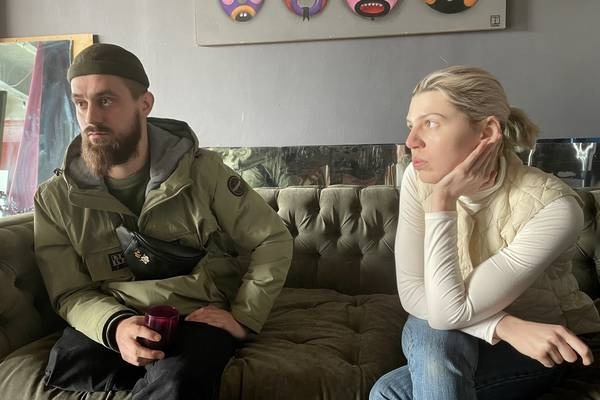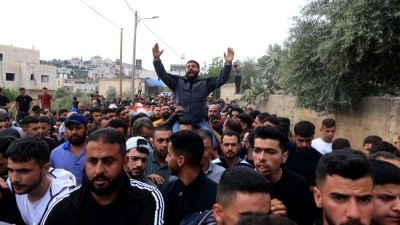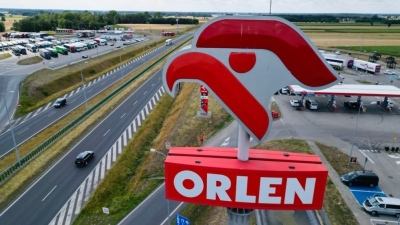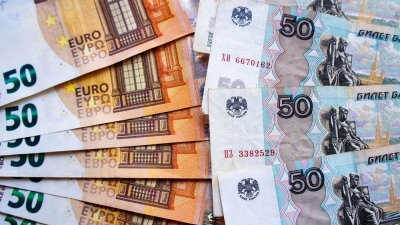‘Don’t forget the price that’s being paid’: Soldiers’ portraits show cost of Ukraine’s war

Friends gave Stanislav Dekhtiar the military callsign “Uksus” (Vinegar) because of the sour faces they say he pulls, but there is no rancour in the way he talks about the price he has paid for defending Ukraine. A Russian shell destroyed Dekhtiar’s right leg near Bakhmut last summer, but he recently returned to the area to deliver supplies to his unit, and volunteered for a photo project that questions the way Ukrainians see and treat their growing ranks of war-wounded. In her studio in a former radio factory in the western city of Lviv, Marta Syrko invites soldiers who have lost limbs, or suffered severe burns or other injuries, to pose for pictures that show the damage that war has done to them, while also capturing a determination to live on that mirrors their nation’s resistance to the Russian invasion. “Why not? It’s interesting and it’s an experience. I don’t see it as an issue that I have a leg missing,” Dekhtiar says of his decision to take part in the project. “I’m not trying to make myself an example to others. But if it helps someone view their situation differently, and see that it’s not the end of their life or the end of the world, then I see nothing bad in this – it’s your attitude towards this that matters.” Dekhtiar (27) is just as straightforward when recalling the day last August when his unit of the Aidar assault battalion came under attack near Bakhmut in the eastern Donetsk region, and a Russian shell exploded a few metres from where he was taking cover. “I saw my left leg was covered in blood and I couldn’t feel my right leg. I put a tourniquet on my left leg but when I saw how heavily I was bleeding I passed out,” he says. [ Bucha remembers: ‘I walked into the garden and found him lying there face down, where they had shot him’ ] Comrades told him how they also put a tourniquet on his smashed right leg and carried him to a safer area as shells landed each minute, destroying every vehicle they had. The deadly barrage continued for about seven hours, until finally he was loaded into the back of a car sent by another unit and evacuated to hospital. “Of the 36 people there that day, only nine survived,” he says. The next few days were a blur of heavy painkillers, surgery and transfers between hospitals in Kostyantynivka about 25km from Bakhmut, to the major eastern city of Dnipro and then across the country to Lviv, 90km from Dekhtiar’s hometown of Boryslav. “On August 29th they did the amputation. They tried to save the leg but there was nothing left to save. Necrosis had begun. Two centimetres of bone were missing. The muscles and tendons and veins and nerves were destroyed. So I signed a document giving permission for the operation, saying that I understood all the difficulties it would entail.” Dekhtiar says he felt grief in the hours after the amputation: “When you wake up and see your leg’s really gone, then it’s like, “Okay…”. But then you think it through and you know it’s not going to grow back, then you accept that fact and realise you have to keep working on yourself, and that this is for your whole life. If you accept it, then you are free.” He has now regained most of the nearly 30kg he lost after his injury and says he is “trying to get back to normal life” using crutches and a prosthetic leg, while still being plagued by “phantom limb” feelings of cold, pain and itching as his nervous system adapts. “I see my friends and go where I used to go, to bars or wherever,” explains Dekhtiar, who joined the army last June having volunteered for Ukraine’s self-defence forces – where he was given the call sign “Uksus” – after Russia launched its full invasion last February. “You get a cool reaction from kids. I was in a café when a mother and her two little boys came in, and one of them rushed to open the door for me. I said “Thanks” and he said, “You’re welcome,” and patted me on the stump of my leg. That was great.” [ ‘I went for my son’: Ukrainians pin hopes on prisoner swaps to bring soldiers home from Russia ] Dekhtiar volunteered to be photographed by Syrko after seeing the first pictures in her series, which she took last December of Sasha Teren, a volunteer soldier who lost both legs in an explosion last August. “The reaction to those pictures was pretty strong on the internet, and the responses were both positive and negative,” Syrko recalls. “Some people asked him why he was almost naked and they said it wasn’t appropriate for a soldier. Our culture is in some ways quite conservative … and the body is still a taboo.” Syrko sees her project as a new way to ask longstanding personal and societal questions that have become far more acute during a year of all-out war. Her grandfather was blind, and she remembers not only how practical problems sometimes made it hard for him to leave his apartment in Lviv, but also how as a child she felt “a bit ashamed to go somewhere with him, because he wasn’t ‘normal’.” “We need to think about our infrastructure. We’re now in a situation where thousands of people have lost limbs in the past year alone. I see them in the street every day and I don’t know if I should help them, ask if they need something, or just ignore them. So this is a question: how should we act together in this social context?” Pictures of wounded soldiers are particularly resonant in a country that is fighting for its survival, where patriotic messages flood the airwaves and cover billboards, and casualty figures are kept secret so as not to dishearten the nation or make army recruitment harder. “It’s good not to demoralise people… But I think we should show this because it’s our reality. We live with this,” says Syrko, who funds her art projects through commercial work for clients including the Dutch National Opera and Ballet. As well as being a reality check for Ukrainians, Syrko sees her portraits as a call for her compatriots to properly value their injured veterans, and she drew inspiration from classical sculptures that she saw displayed at the Paris Louvre. “Those sculptures without limbs are considered priceless,” she says. “And these people who have lost limbs are just as valuable for us, and we have to integrate them in society.” Dekhtiar insists “there is no script” for how amputees cope with their injuries. “Everyone’s different and will react differently. Some people are angry with the whole world. Some hate everything now and feel that everyone owes them something. What I don’t like is strangers trying to hug me. I know they want to show their gratitude or something, but I don’t like it. Everyone sees it and it looks like an act,” he says. He does not want thanks for his service but expects all Ukrainians, even 1,000km from the front line in Lviv, to support the war effort. “Generally, we don’t talk about our losses. So maybe some people are starting to feel like the war is somewhere else, over there [in the east]. But they shouldn’t forget that we are all part of this. No one should be indifferent: donate to the army, make camouflage nets or help in some other way. There should be support from everyone,” Dekhtiar says. “When I came back into Lviv after being in hospital I just wanted to take a walk around. And I told my friends that everything is happening over there [on the front line] so that you can live like this here. But don’t forget the price that’s being paid – you should care.”
‘Don’t forget the price that’s being paid’: Soldiers’ portraits show cost of Ukraine’s war
Ukraine war: Russia says grain deal can only be extended by 60 days
:quality(70):focal(2607x2098:2617x2108)/cloudfront-eu-central-1.images.arcpublishing.com/irishtimes/527UEHCJOW3OQLO7DFR5AKMU3Y.jpg)
Oscars triumph of All Quiet on the Western Front contrasts sharply with disquiet on the German front
:quality(70)/cloudfront-eu-central-1.images.arcpublishing.com/irishtimes/HMBTPEUI3N2YZLXNUT7JHHJS2E.jpg)
:quality(70)/cloudfront-eu-central-1.images.arcpublishing.com/irishtimes/CFHLXCASMZCCNDTX76MKXQTWPU.jpeg)
:quality(70)/cloudfront-eu-central-1.images.arcpublishing.com/irishtimes/PLII2ODNPFEM3KYQKHYJ4MSP74.jpg)
:quality(70)/cloudfront-eu-central-1.images.arcpublishing.com/irishtimes/ST53YSH46BFYDEGPRMIXCGYFVU.jpg)
:quality(70)/cloudfront-eu-central-1.images.arcpublishing.com/irishtimes/QHAOH7GMMNEWTA7UYZBAPIJCPE.jpg)
:quality(70)/cloudfront-eu-central-1.images.arcpublishing.com/irishtimes/F5YGJ4MZ75F6RJWBO5TEYO227I.jpg)
:quality(70)/cloudfront-eu-central-1.images.arcpublishing.com/irishtimes/IRGRBVBVTRF6DEI4VFXDPX6EUU.jpg)
:quality(70)/cloudfront-eu-central-1.images.arcpublishing.com/irishtimes/SE4Y3WNPBBHZDI6WW6W6433IAA.jpg)



